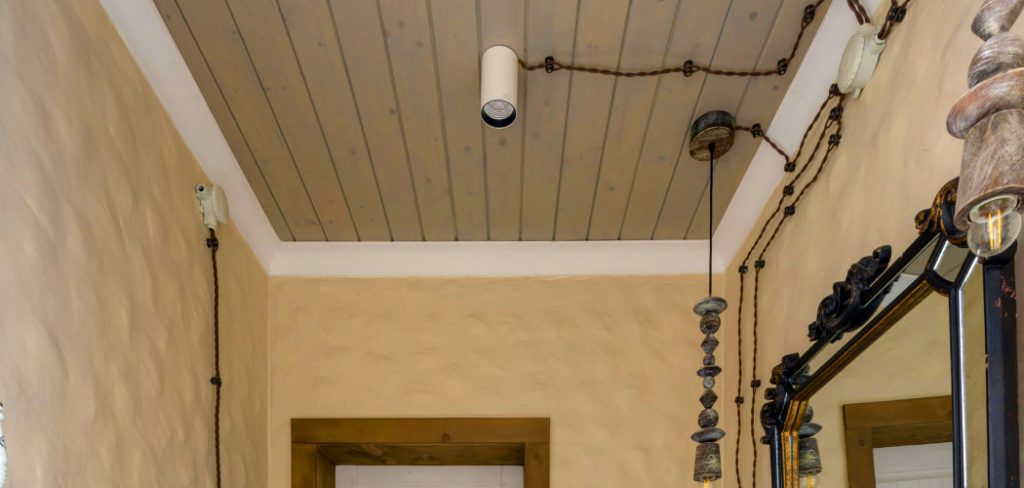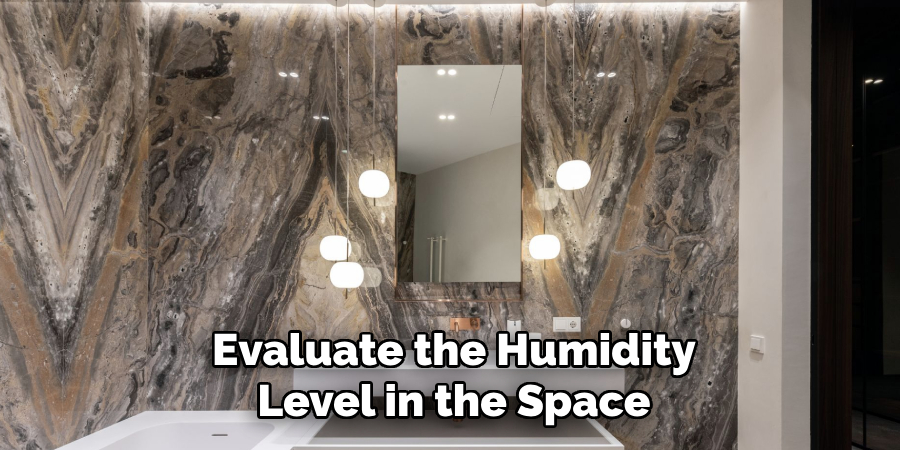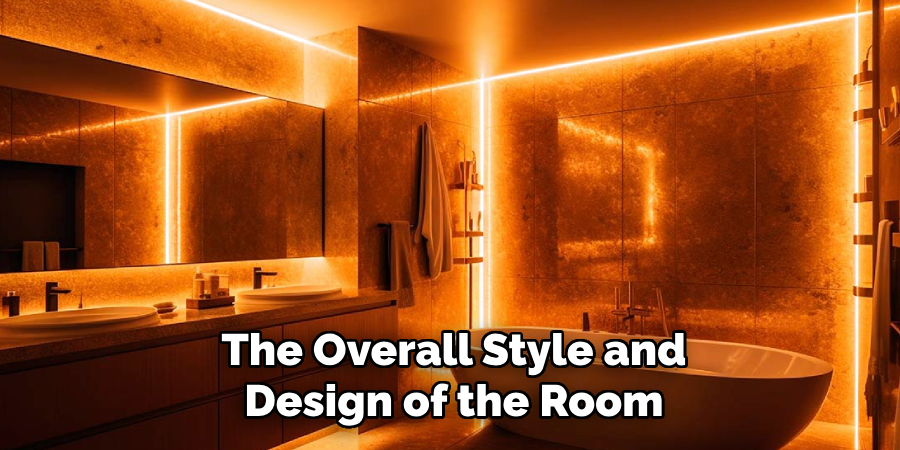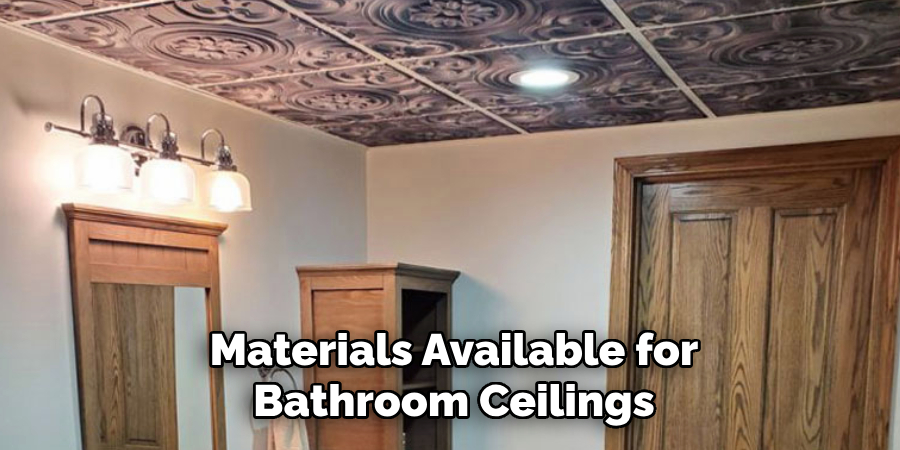When it comes to designing or renovating a bathroom, the ceiling often gets overlooked in favor of more prominent features like tiles or fixtures. However, selecting the right material for your bathroom ceiling is crucial for both functionality and aesthetics.

Bathrooms are high-moisture environments, so the ceiling material needs to be durable, resistant to humidity, and capable of withstanding daily wear. Additionally, the right choice can significantly enhance the room’s style and practicality.
This guide on How to choose material for a bathroom ceiling will help you understand the best options for bathroom ceiling materials and how to choose the one that fits your needs.
Why is the Bathroom Ceiling Important?
The ceiling in your bathroom serves both functional and aesthetic purposes.
Functionally, it plays a vital role in controlling humidity and preventing moisture build-up, which can lead to mold and mildew growth. A well-designed bathroom ceiling should also have good ventilation to prevent condensation from forming.
Aesthetically, the ceiling can add texture, color, and style to your bathroom. It can also help create an illusion of height and make the room feel more spacious.
8 Step-by-step Guidelines on How to Choose Material for a Bathroom Ceiling
Step 1: Assess the Humidity Level in Your Bathroom
The first step in choosing the right material for your bathroom ceiling is to evaluate the humidity level in the space. Bathrooms with showers or bathtubs tend to have higher moisture levels than powder rooms or half-baths. Consider how often the bathroom is used and whether it has adequate ventilation, such as exhaust fans or windows.

High-moisture environments require materials that are specifically designed to resist water damage, mold, and mildew. Understanding the humidity level will help you narrow down your options and ensure a durable, long-lasting ceiling solution.
Step 2: Determine Your Budget
Like any home renovation project, it’s essential to set a budget for your bathroom ceiling. The cost of materials can vary significantly, so it’s crucial to have a clear idea of how much you’re willing to spend before making any decisions.
Some materials may be more expensive upfront but offer long-term benefits, such as being water-resistant and low maintenance. Others may be more budget-friendly but require regular upkeep or replacement sooner. Consider the pros and cons of each material and decide which best fits your budget and needs.
Step 3: Consider the Style of Your Bathroom
The bathroom ceiling should complement the overall style and design of the room. If your bathroom has a traditional or classic look, materials like beadboard or wood might be suitable. Modern bathrooms may benefit from sleek and minimalistic options like metal or glass.

Additionally, think about the color scheme and texture of your bathroom. The ceiling can add contrast or complement the walls and floors, so choose a material that adds visual interest to the space.
Step 4: Evaluate Maintenance Requirements
Some materials require more maintenance than others. For example, wood ceilings need to be regularly sealed to prevent water damage, while PVC panels are low-maintenance and easy to clean. Consider how much time and effort you’re willing to put into maintaining your bathroom ceiling when choosing a material.
It’s also essential to consider the durability of the material. Bathrooms are high-traffic areas, and the ceiling may be susceptible to scratches or dents from items like shower caddies or towels. Opt for a material that can withstand daily wear and tear.
Step 5: Think About Acoustics
If you have multiple bathrooms in your home or live in an apartment building, noise control might be a crucial factor to consider when choosing a bathroom ceiling material. Some materials, like metal or tile, can amplify sound, while others, such as cork or acoustic tiles, can help reduce it.
Think about whether you want a more private and quiet atmosphere in your bathroom and choose a material accordingly.
Step 6: Research the Different Materials Available
Take the time to explore the wide range of materials available for bathroom ceilings and weigh their pros and cons. Popular options include gypsum board, which is cost-effective and offers a smooth finish, though it requires proper sealing to prevent moisture damage. PVC panels are another excellent choice due to their water resistance, low maintenance, and ease of installation. For a more natural look, wood or beadboard can provide warmth and charm, but these materials require regular treatment to resist moisture and prevent warping.

Other materials, such as metal panels or tiles, can lend a modern or industrial aesthetic to your bathroom. They are durable and resistant to mold but can be prone to rust if not treated correctly. Glass panels can introduce a sleek, contemporary vibe, allowing for light reflection, but they may require frequent cleaning to maintain their appearance. By researching the various materials in terms of cost, durability, maintenance, and style, you can make an informed decision that aligns with your bathroom’s functionality and design.
Step 7: Consider Professional Installation
While some materials may be easy to install yourself, others require professional installation. Before purchasing the material for your bathroom ceiling, consider whether you have the skills and tools to do it correctly or if you need to hire a contractor.
Professional installation can ensure that the material is properly sealed and installed for maximum durability and functionality. It may also save you time and effort in the long run.
Step 8: Test Samples before Making a Final Decision
Before committing to a specific material, it’s always best to test samples in your bathroom environment. This step will give you a better idea of how the material looks and feels in your space, especially when considering factors like light reflection and acoustics.
Testing samples can also help you identify any potential issues or concerns before making a final decision. It’s better to take the time to test samples now than regret your choice later on.

Following these guidelines on How to choose material for a bathroom ceiling can help you choose the right material for your bathroom ceiling and create a functional and visually appealing space. Remember to assess humidity levels, set a budget, consider style, evaluate maintenance requirements, think about acoustics, research material options, consider professional installation, and test samples before finalizing your decision. With the right material in place, you can enjoy a beautiful and durable bathroom ceiling for years to come.
Maintenance Tips for Bathroom Ceilings
In addition to choosing the right material for your bathroom ceiling, it’s essential to follow proper maintenance practices to ensure its longevity and functionality. Here are some tips for maintaining your bathroom ceiling:
- Regularly clean and inspect the ceiling for any signs of damage or water leakage. Address any issues promptly to prevent further damage.
- If you have a wood ceiling, make sure to seal it properly and reapply sealant regularly to prevent moisture damage.
- For PVC panels, wipe them down with a damp cloth and mild detergent as needed to keep them clean and free of mold or mildew growth.
- Avoid using harsh chemicals or abrasive cleaners on your bathroom ceiling, as they can damage the material.
- Consider using a dehumidifier in your bathroom if you live in a particularly humid climate to help control moisture levels.
- Regularly inspect and replace caulking around fixtures such as light fixtures and vents to prevent water leakage.
By following these maintenance tips, you can keep your bathroom ceiling in top condition and avoid costly repairs or replacements in the future. Remember to always choose a material that aligns with your lifestyle and maintenance preferences to make upkeep as easy as possible. With proper care, your bathroom ceiling can provide both functionality and aesthetic appeal for years to come.
Frequently Asked Questions
Q1: What is the Best Material for a Bathroom Ceiling?
A1: The best material for a bathroom ceiling depends on several factors, including budget, style preference, maintenance requirements, and level of moisture resistance needed. Popular options include PVC panels for their low maintenance and water resistance, wood or beadboard for their warmth and charm (though they require regular treatment), and metal or tile for a modern or industrial aesthetic. It’s essential to research and consider all options before making a decision.
Q2: How Do I Choose the Right Material for My Bathroom Ceiling?
A2: To choose the right material for your bathroom ceiling, assess humidity levels in your bathroom, set a budget, consider style preferences, evaluate maintenance requirements, think about acoustics, research material options, and test samples before making a final decision. It may also be helpful to consult with a professional or contractor for their expertise and advice.
Q3: Can I Install My Bathroom Ceiling Material Myself?
A3: Some materials may be easy to install yourself, while others require professional installation. Before purchasing any material, it’s crucial to assess your skills and tools to determine if you can install it correctly. If not, hiring a professional can ensure proper installation and save time and effort in the long run.
Conclusion
Choosing the right material for your bathroom ceiling is an important decision that requires careful consideration of various factors. By following these step-by-step guidelines on How to choose material for a bathroom ceiling, you can assess your needs and preferences, research different materials, and make an informed decision that will enhance the functionality and style of your bathroom for years to come.
Remember to prioritize durability, maintenance, and acoustics while keeping your budget and personal style in mind. With the right material, your bathroom ceiling can be both functional and visually appealing. So, take your time, explore different options, and choose a material that best fits your needs and brings your bathroom design to life. Happy renovating!

